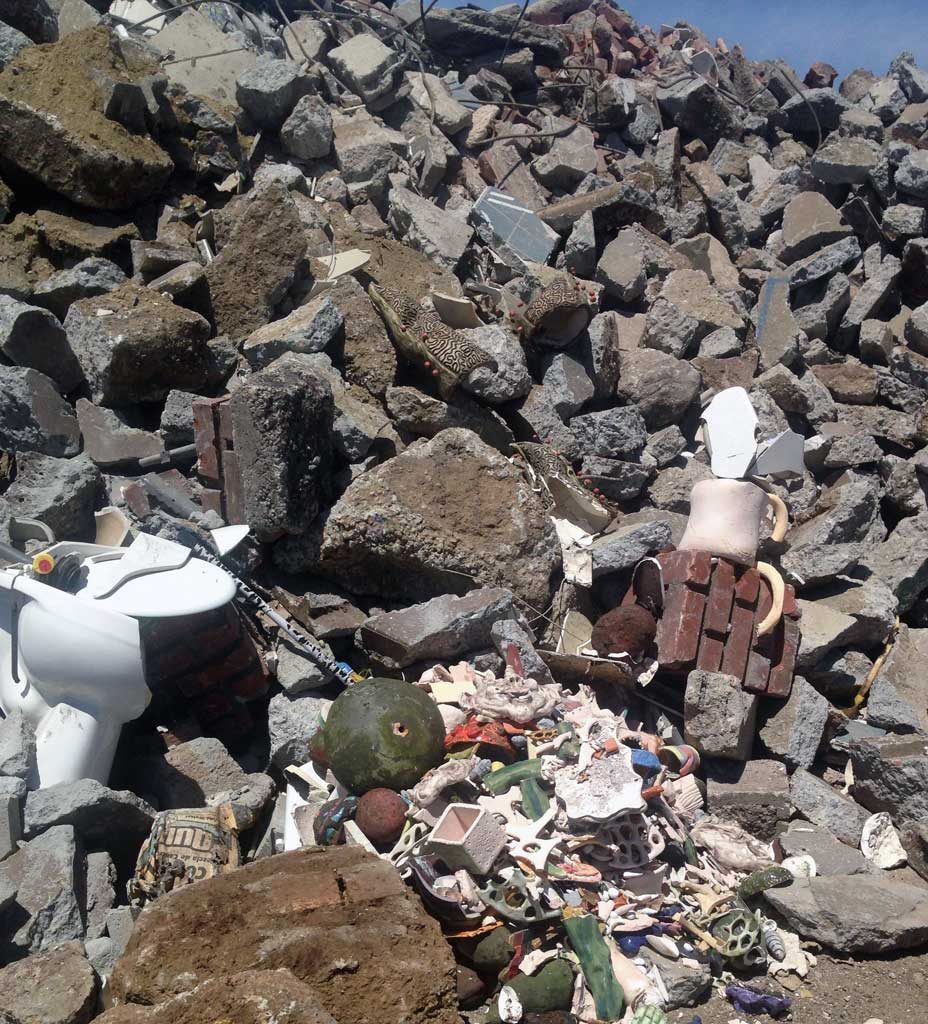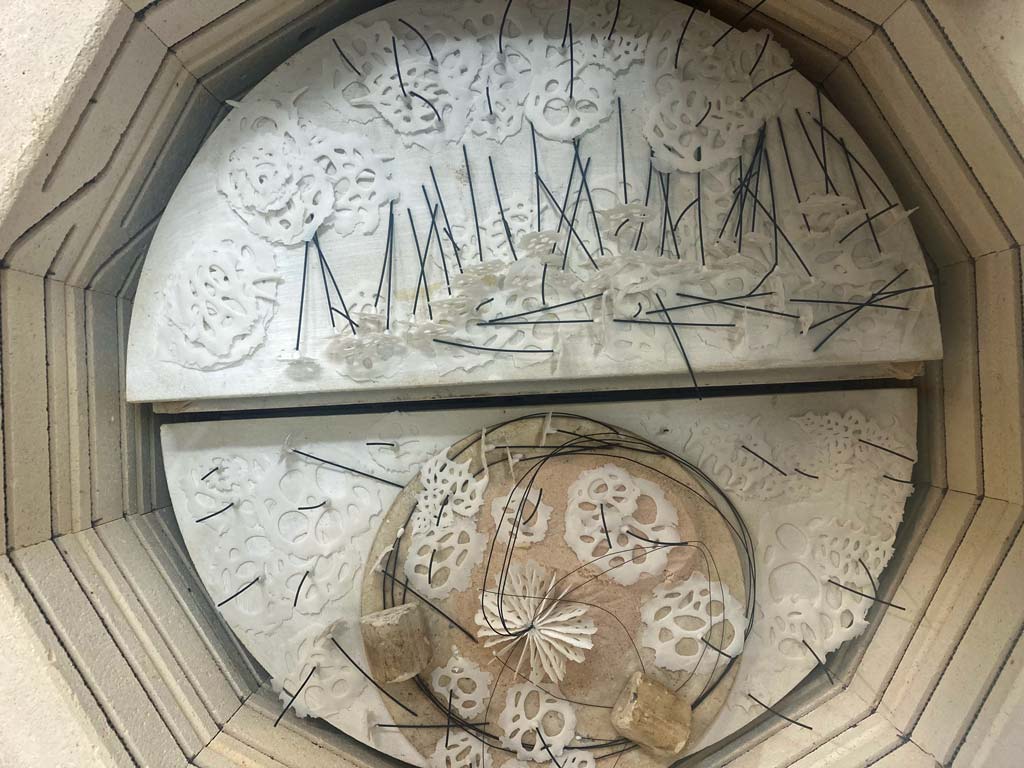I try to keep as ‘green’ of a studio as possible, all the while knowing that I’m working with a material that has been mined from the earth and shipped across hundreds to thousands of miles. So, it’s a bit of a quandary for me but I try to offset that heavy carbon footprint in other ways.
I’ve written posts before about recycling my fired ceramics into the tile/toilet pile at our local landfill, they grind it up and use it as aggregate for other products. Which is a great way to get rid of all my mistakes, broken bits and abandoned ideas. I also recycle all of my wet clay so that every scrap will be used even if it’s dried out on me. And I try to reuse all the packing materials that come into my studio, in addition to a regular recycling of metal, plastics and papers.
Recently I started thinking about my energy usage in the studio in regards to my kiln firings. I started playing with the idea of once firing my work, which for those that aren’t familiar with the process of working with clay means that instead of doing a slow initial firing called the bisque, followed by a second glaze firing, I’m instead going from dry clay to finished ceramic in one firing. With the cost and use of energy to get my kilns up to 2000 degrees, saving one firing seemed to be the way to go.
From a technical standpoint it doesn’t always work depending on your clay, glazes, process of building and a million other clay techy things that can go wrong. But for my porcelain pieces that don’t even get glaze put on them, I thought I could make it work. The first few times I tried, the clay seemed slightly pinker in color rather than the true white it should be, so in my last firing, I added a bit more time to the kilns firing program at it’s mature temperature, letting it soak at it’s maturity point and that worked! I’m really exciting that I can get all of these pieces done in one firing now and waste less energy all at the same time!
Any one have other ideas on how to keep a greener clay studio?

